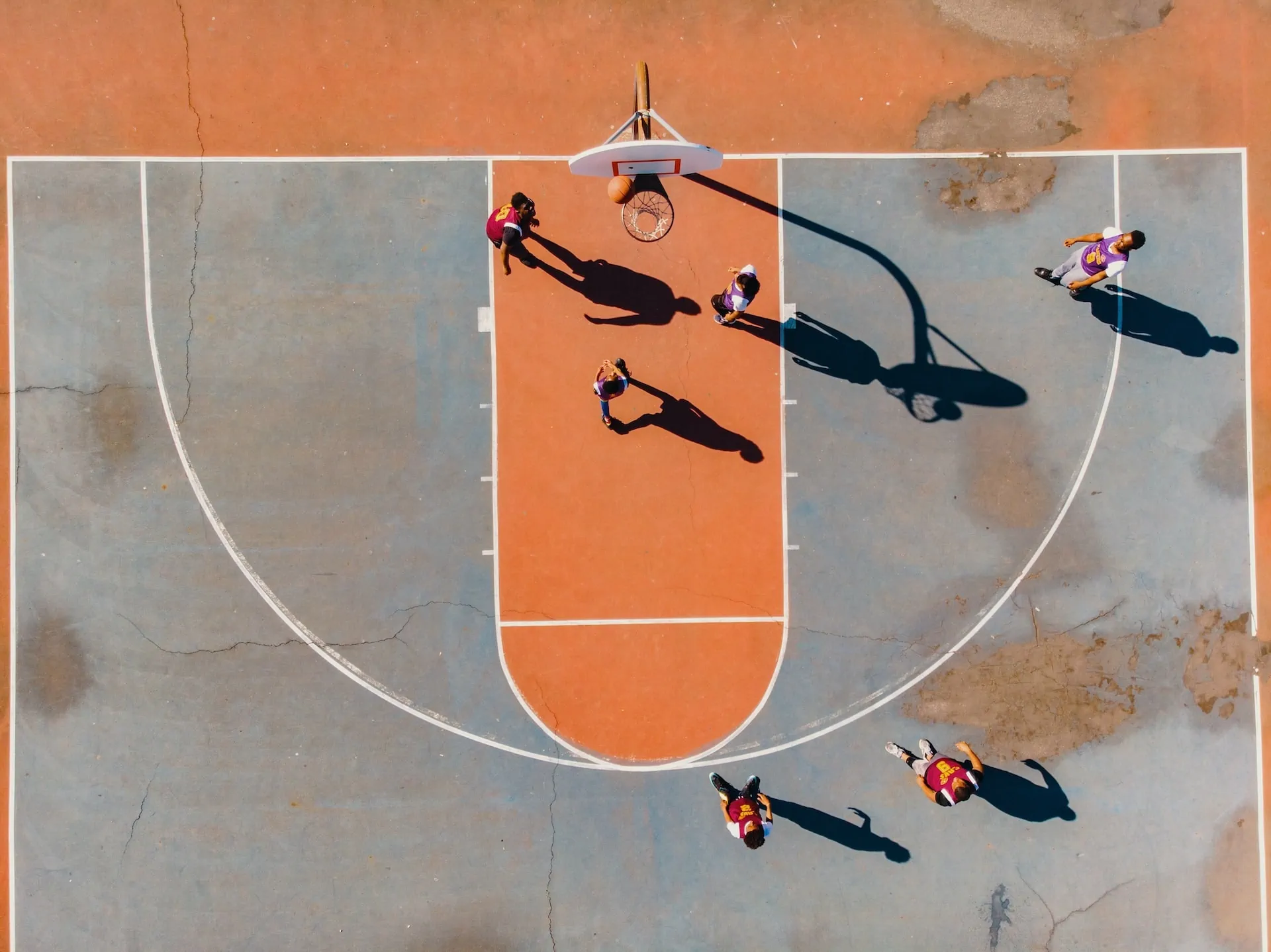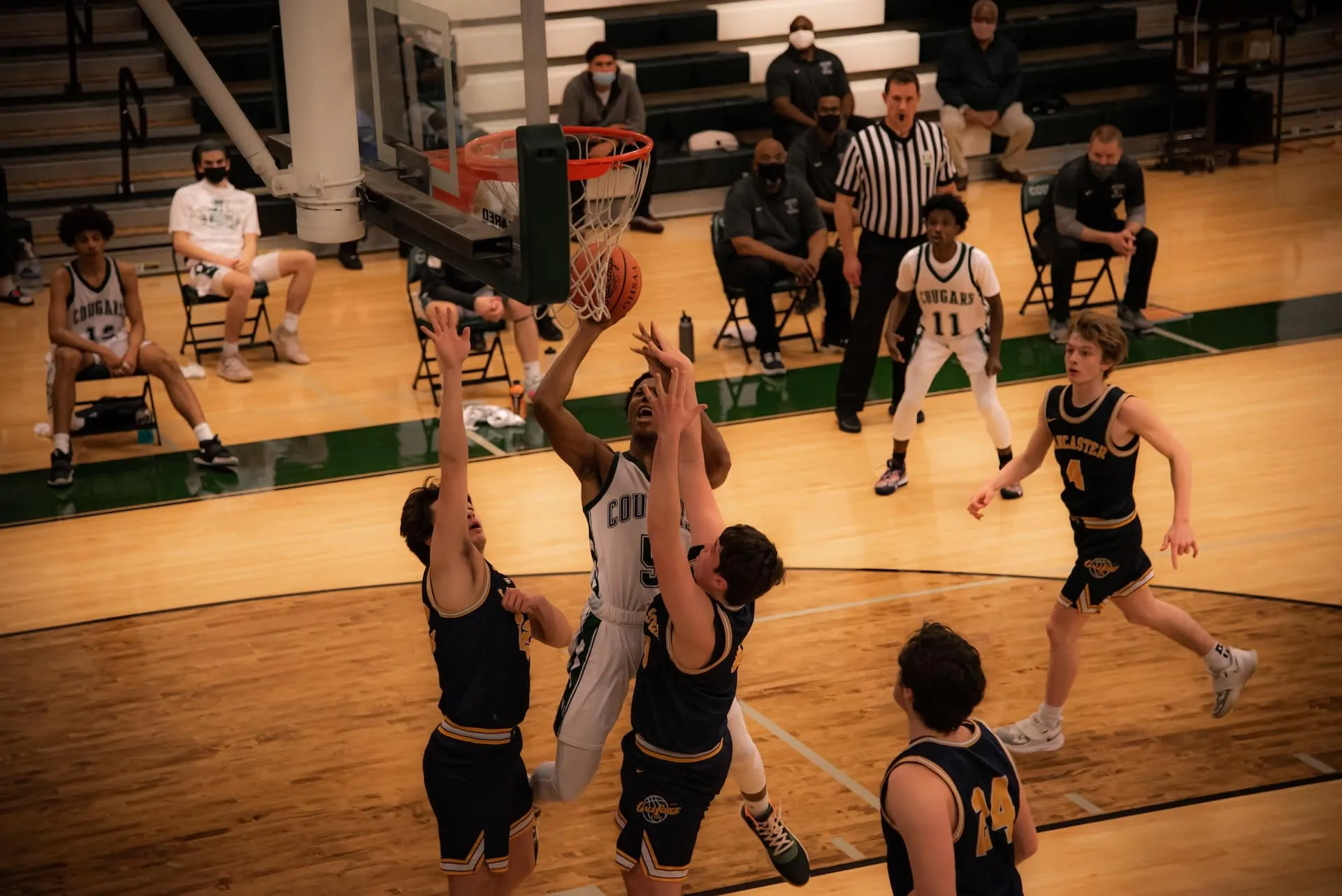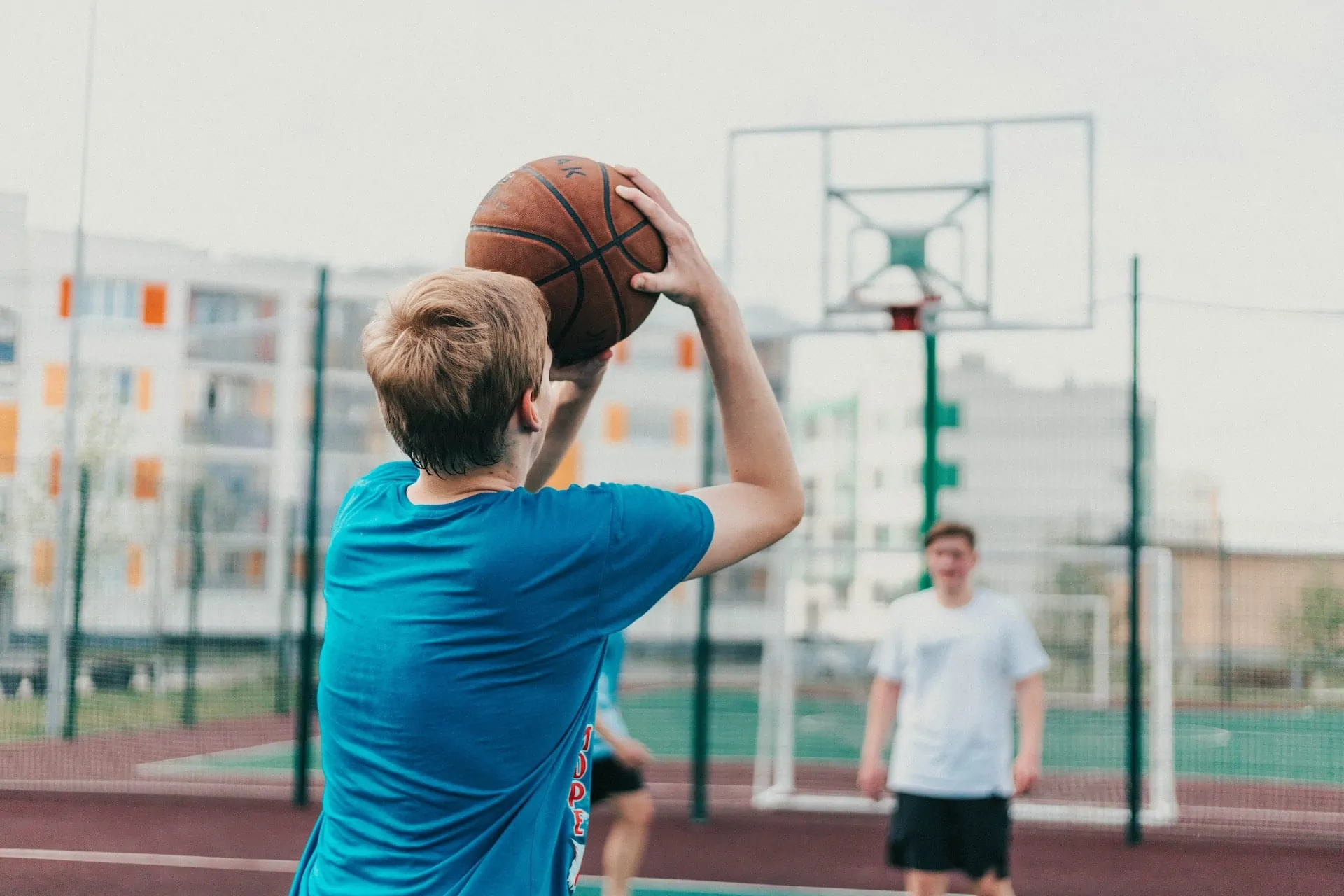A free throw is probably the easiest yet most challenging shot a player can take during a basketball game. It’s easy because nobody is guarding and blocking your shot, but at the same time, the fact that you’re alone in there is nerve-wracking. Are you one of those guys that struggle at the charity stripe? If so, you can undoubtedly benefit from the tips and drills on how to improve free throw shooting fast.
But before diving into the subject head-first, learn more about free throw shooting in a basketball game.
 What is Free Throw Shooting in Basketball?
What is Free Throw Shooting in Basketball?
In basketball, free throws are penalty shots awarded to the team that committed the foul. However, free throws are not given to just about every foul. It’s either the offensive player is in the act of shooting when he’s fouled, or the defensive player’s team is at the foul limit. Be reminded that free throws are not counted as field goals. A field goal can be worth two or three points, but a free throw can only be worth one.
Free throws are always unguarded, hence the name “free.” Free throws allow a basketball team to score points without the shot clock running.
Four types of fouls warrant free throws. These are personal, team, flagrant, and technical fouls. A personal foul is committed when a defender has illegal contact with an offensive player. And if a personal foul occurs when the offensive player is in the act of shooting, free throws are awarded.
Team fouls are the accumulation of personal fouls from the members of a team. If the number of personal fouls exceeds the limit (in the NBA, the foul limit is 5), the offensive team is rewarded free throws.
Fighting or verbal abuse by players or coaches is a technical foul, which results in free throws and possible ejection from the game. A flagrant foul is defined as excessive and unnecessary contact resulting in free throws plus ball possession.
Why is a Free Throw Important?
There is a positive correlation between free throw percentage and winning. Last year, nine of the 10 teams with the best free throw percentage eventually made it to the playoffs. Without a doubt, free throws are essential part of winning. Free throws are usually the difference between a loss and a win, especially in close games where every point counts.
Imagine this scenario: Suppose Team A leads Team B by two points, 110-108, with only three seconds remaining. A player from Team A was fouled and had to shoot two free throws. But he makes only 1 out of 2, making the score 111-108. A player from Team B hurriedly inbounded the ball to a teammate and, just in the nick of time, launched a three that swished the net. The game goes to overtime.
Can you see why a free throw is crucial? In the situation mentioned above, it would be an automatic win for Team A had the player made two of his free throws. Instead, the game has to go overtime, where they could possibly tire out and let the game slip away.
This is not an isolated case. Many close games have been won and lost at the free throw line, and even one costly miss at the charity stripe could mean defeat.
 How Do Free Throws Happen?
How Do Free Throws Happen?
Some formats award free throws to teams based on the number of fouls committed in one half and/or the type of foul committed. When a shooter is fouled, he is always granted two or three free throws, depending on where he was when he shot.
Personal fouls on the act of shooting, team over the foul limit, technical fouls, and flagrant fouls all warrant free throws. Only offensive fouls would not result in free throws.
After the referee grants free throws, the shooter must take the shot from behind the free throw line at the end of the restricted area on the court. If the shooter misses the basket, up to four players from each team queue up on either side of the free throw lane to grab the rebound and take the ball back. In professional basketball, three players on the defense and two on the offense vie for the possible rebound, although the shooter himself and the other players can technically join the fray.
However, the rebounding players have rules to follow. They must keep their positions until the ball is no longer in the hands of the shooter; otherwise, the referee will award the shooter another shot attempt. (This is called a lane violation.) The player receives one to three free throw attempts, depending on the type of the foul. Every successful free throw is worth one point.
 What are the Rules for Free Throws?
What are the Rules for Free Throws?
When a free throw is awarded, the official places the ball on the offended team’s free-throw line. After the players have taken their positions around the key, the official specifies the number of free throws being given and sends the ball to the free thrower, who then has 10 seconds to make the throw. The free throw is nullified if a player fails to shoot a free throw in the allotted time.
Here are some more basketball free throw rules in the NBA:
- The free throw shooter may not step beyond the free throw line until the ball makes contact with the rim, backboard, or the free throw is completed.
- The free throw shooter must not purposefully fake a free throw try. If you do not know what that looks like, refer to the video below.
- No player must touch the basketball before it bounces into the rim or above the cylinder.
- No player must touch the ball before it reaches the rim.
 Are You Allowed to Jump on Free Throws?
Are You Allowed to Jump on Free Throws?
Can you jump on a free throw? Yes, you can! Nothing in the rule book prohibits jumping as you shoot free throws. It is highly discouraged, though; you may get called for a violation if you step or jump over the line. If you’re a younger athlete, it may take time for you to develop arm and hand strength, so you may need to jump while shooting a free throw. Nevertheless, as you grow stronger, you may need to ditch that free throw shooting technique.
 How to Shoot a Free Throw Like a Pro: 7 Tips and Drills
How to Shoot a Free Throw Like a Pro: 7 Tips and Drills
Most coaches don’t include free throw drills in practices. That’s okay if you want to lose close games down the stretch. The key to practicing free throws is putting it at the end of practice or after a conditioning drill. The idea is to ensure that the players are tired so that their free throw pulse gets used to pressure.
Here are some of the free throw drills you want to try:
1. The Swish
This is the first of the four free throw shooting drills featured here and probably the simplest one, too. You can group the players into pairs or in any way you want. The idea is to get 10 points, but the scoring is where it gets tricky. The players may only score 1 point if they swish a free throw, 0 points on a make but not a swish, and -1 on a miss.
2. Laps
“Laps” is a free throw shooting, and conditioning drill rolled into one. Have the first player shoot free throws. He makes two, and he won’t have to run laps. He makes one, and he has to sprint from baseline to baseline. He misses both, and he’ll sprint around the perimeter of the court for a full lap.
3. Shoot to 10
The best part about free throw shooting drills is that they are as straightforward as they come. There are no complications to it, just pure arithmetic. In this drill, every player’s goal is to shoot eight out of 10 free throws. If he couldn’t do it, he had to run laps, do 10 push-ups, or whatever punishment you could think of.
4. Shooter-Rebounder-Runner
This drill seeks to replicate a game situation in which the free-throw shooter is exhausted. Use all of the baskets and divide the players into groups of three. There is one shooter, one rebounder, and one “runner” at each basket.
The three players will do a round-robin of roles. The shooter shoots two free throws, the rebounder rebounds for the shooter, and the runner runs a lap. After this sequence, the shooter rebounds, the rebounder runs laps, and the fatigued runner from before will shoot free throws. Run this drill until each team reaches the number of free throws you want them to make.
5. Find the Nail
Now, we’re on to our tips. On every basketball court, there is a nail that aligns the center of the rim to the center of the free throw line. Take advantage of this by squaring your shooting shoulder to it. You may also align your dominant foot to the nail so that your shot is always straight with every free throw you attempt.
The mistake most players commit when finding the nail is to align it with the center of their body. That is not the correct way to do it because by then, your shooting hand and shoulder are out of alignment with the center of the basket.
6. Load the Ball Lower
Since you’re barely using your legs on a free throw, you need to generate momentum or power primarily through your arms. The best way to do this is to load the ball lower, ideally below your waist. Anything at your shoulder or chin level makes it more complicated because you lose your legs more. In a game where players are fatigued, this could be the difference between a make or miss.
To explain more about the importance of lowering your shot pocket, here is ShotMechanics’ Collin Castellaw:
7. Develop a Routine
Every great free throw shooter has a routine. That is, they do a ritual or habit before they shoot the free throw. Whether that’s two dribbles followed by a deep breath or the other way around, it’s important to have a free throw routine. It’s just as important as having a proper free throw shooting technique. It builds consistency and gives the shooter a sense of comfort that he’s done this before.
Check out how NBA Skills Trainer Jordan Lawley explains the importance of having a free throw routine:
Wrapping Things Up? How to Improve Free Throw Shooting Fast
With all the running, jumping, and three-point shooting you see in basketball, sometimes the game boils down to free throw shooting accuracy. In the most literal sense, some of the biggest games have been won at the charity stripe.
What can you do if you’re a basketball player who has struggled shooting at the line? Or, if you’re a coach, how do you handle free throw shooting drills to maximize your players’ capabilities?
The first step on how to improve free throw shooting fast is to practice free throws. Making free throws need mental toughness, and practicing a lot could build up the required mental fortitude. You should also try aligning your shooting shoulder to the basket with the help of the nail found at the center of the line. Then, coaches also recommend loading your shooting pocket lower so you can use your arms more. After all, you don’t jump when shooting free throws. Lastly, you must find a routine before shooting a free throw to give you a sense of comfort and consistency.
We hope you enjoyed this post! If you did, be sure to check out our other basketball FAQ articles here.
Want to get better at basketball?
Join our newsletter & get our comprehensive
101-page basketball guide.
Become a better baller today 👇


 What is Free Throw Shooting in Basketball?
What is Free Throw Shooting in Basketball?

 How Do Free Throws Happen?
How Do Free Throws Happen?
 What are the Rules for Free Throws?
What are the Rules for Free Throws? Are You Allowed to Jump on Free Throws?
Are You Allowed to Jump on Free Throws? How to Shoot a Free Throw Like a Pro: 7 Tips and Drills
How to Shoot a Free Throw Like a Pro: 7 Tips and Drills


